Centennial Gaming In The Great War – The Campaigns Of 1918: Part Five
May 28, 2018 by oriskany
Here we are, at last, Beasts of War history fans, for the final part in our series on Centennial Gaming in the Great War. My friend Sven (@neves1789) and I have been looking at wargames set in the spring and summer campaigns of 1918, “earthquake moments” in history through which we’re now passing through 100-year anniversaries.
Read The Series Here
Up until now, these have largely been a series of German offensives aimed at winning the war on the Western Front before American numbers could be leveraged against them in a decisive way. If you’re just joining us, so far we’ve covered:
- Part One – Introduction & Background
- Part Two – St. Michael Offensive
- Part Three – Georgette Offensive
- Part Four – Blücher-Yorck Offensive
But for now, it’s time to see how these campaigns finally stagger to a bloody, smouldering end.
We’ll also see how they inevitably lead to the Allied push-backs that will lead to the November Armistice of 1918 when at last we have “All Quiet On The Western Front.”
Zeebrugge Raid
Sven Gets His Feet Wet
Throughout the series, we’ve seen the Germans on the offensive while the Allies were only conducting relatively small and local counterattacks. In April 1918 the strategic initiative was still in German hands but both sides knew it would shift to the Allies once the Americans had their fully mobilised army on the European continent.
Yet these Spring Offensives weren't the only place where the Germans were taking ground. Since late 1916 the German u-boats (submarines) had sunk an average of 300,000 tons of Allied shipping a month, at times spiking up to more than 600,000. This u-boat menace was obviously proving a major issue for the British Royal Navy who tried multiple approaches in dealing with it.
During the planning for the Battle of Passchendaele, British Field-Marshal Haig had come up with a plan, Operation Hush, to neutralise the Belgian ports of Oostende and Zeebrugge that were harbouring some of the German u-boats. The first phase would require a breakthrough at Ypres with the Allied troops advancing about twenty-five kilometres towards the rail hub of Roulers.
The second phase would see British troops land on the Belgian coast behind German front line and move inland to link up with the main Allied army. Together they could then clear the Belgian ports of German u-boats. Obviously, this plan never came to be executed as the Third Battle of Ypres got completely bogged down in the mud around a small speck of land called Passchendaele.
The u-boats remained a problem, however, and at the beginning of 1918, the Royal Navy began planning a naval operation to block the Belgian ports. The plan was fairly straightforward, sail obsolete cruisers into the ports of Zeebrugge and Oostende and sink them at the entries of the canals, thereby blocking the Germans u-boats from leaving their ports further inland.
On 23rd April the raids on both Zeebrugge and Oostende took place. The attempt at Oostende was a complete failure, German defenders were well-prepared and repelled the Royal Navy raid. At Zeebrugge the British met with more success, they managed to scuttle all three of their old cruisers in the port, including two in the canal.
Unfortunately, the Zeebrugge Raid did not yield the expected solution since the Germans were able to clear part of the canal after a couple of days. In the long run however it would provide the Royal Navy with experience that would serve them well during the Second World War, most famously with the Saint-Nazaire Raid.
Gneisenau Offensive
As we saw in Part Four, the Germans almost scored a massive breakthrough with Operation Blücher-Yorck, creating a second salient in the centre of the Western Front. With Operation Georgette and the Battle of the Lys coming to a standstill at the end of April, Ludendorff envisioned a new operation to maintain his offensive momentum.
Like Blücher-Yorck, Operation Gneisenau would serve as a diversion. This time Ludendorff’s aim was to draw British troops from Flanders. Believing that Haig and Foch (British and French commanders, respectively) would reinforce Paris if it were threatened, Ludendorff aimed his offensive right between both salients, in the direction of the French capital. By now the German army had been on the offensive for over three months non-stop.
The Allies had by this point gained valuable experience in defending against German stormtrooper tactics and had adopted a defence in depth. The assault came on 9th June, a couple days after Blücher-Yorck ended, and achieved an advance of about fourteen kilometres. After two days the attack was halted by a fierce French counterattack that used tanks and surprise to its advantage, compelling Ludendorff to call off the operation.
Endgame
The last German offensive of the war was launched on 15th July, a month after the failure of Gneisenau, aptly named “Friedensturm” or the Peace Offensive. It failed to make any real breakthrough as by that time most of the experienced German stormtroopers had been killed, wounded, or captured … and all reserves had been exhausted.
Collectively known as the Kaiserslacht (“Kaiser Battle,” also known as the Spring Offensive), these German offensives were now truly over and had cost Germany over one million soldiers. There would be no tactical, let alone strategic, victory. The Allies were regaining the initiative and preparing their own great counteroffensive. The lessons they’d learned the previous years would be put to use and finally break the stalemate.
Contrary to popular belief both in the past and present, the German army would be decisively defeated in the field in 1918, despite being on Allied territory. The Hundred Days Offensive would drive them halfway through Belgium and the east of France before finally signing the Armistice on 11th November 1918, putting an end to the Great War.
Legacy Of The Kaiserschlacht & The Great War
In the first article, we explored how trench warfare was not new but came to its full use in the First World War. Just so that many principles and techniques learned during the Great War were refined and perfected during the Second World War. The most visible being tank technology but also tactics like infiltration or defence in depth.
The Allied armies would mainly focus on defensive warfare and build some of the world’s most impressive fortifications. Having seen the effects that a prepared and fortified position offered, this was not folly. Although the Maginot Line is sometimes scolded (with the benefit of hindsight), should it have been completed, it could have formed a formidable and perhaps even war-winning obstacle.
The Germans, on the other hand, took different lessons and remembered how they had broken through the line during Operation Michael using speed and surprise. Theorising how exploiting a breakthrough with fast armoured vehicles might bring a quick end to a campaign and provide a way to avoid a two-front war, they would set themselves up for some of the most spectacular victories during the Second World War.
Oriskany Brings It Home
As @neves1789 has outlined, the slowing and eventual halting of offensives like St. Michael, Georgette, and Blücher-Yorck had cost Ludendorff’s German armies a staggering butcher’s bill in casualties. Even worse, these failings had sapped the last of the momentum generated from his momentary advantages in strategic initiative earlier in 1918.
By July 1918, the writing was truly on the wall. Not only had Gneisenau and “Peace” offensives failed, but French-American counterattacks across the Marne River had soon driven back the German Seventh and Ninth Armies, never again to threaten Paris.
Not all the news in July was so rosy. In Russia, Czar Nicholas II and his family were murdered by Russian Bolsheviks, and what remained of the Russian Empire plunged into years of brutal civil war. The first mass deaths from the Spanish Flu were also reported, a global epidemic that would quickly kill more far people than the Great War.
By August, their armies hit especially hard by the Spanish Flu, the Germans were truly reeling. On 8th August the British Fourth Army used 456 tanks at Amiens, smashing six German divisions. The first all-American attack hit at St. Mihel on 12th September, supported by almost 1500 aircraft in an unprecedented air-ground coordinated operation.
Yet still the German Army offered determined resistance and despite gaining so much ground, the Allies had a long way to go before the end of the Great War was in sight.
We actually hope to come back to the Great War later in the year, perhaps for another article series covering the battles later in September and October 1918. The Battle of the Argonne Forest is in this time period (just as one example), so there’s plenty of material to cover before the final Armistice of 11th November.
Thank You!
Of course, I want to thank Sven @neves1789 for his tireless work with these articles. Crushing out pages of text and over a hundred great photos, putting up with my incessant production schedule reminders, he truly deserves a Beasts of War “Croix de Guerre” for his part in this series.
I’d also like to thank @erik101, about half the armies and terrain in all these 15mm World War One Flames of War table photos, are his. Big thanks as well to @dignity and @johnlyons for another great interview recorded and broadcast on the Weekender earlier in the series.
As always, I’d also like to thank @dracs (Content Manager) and @brennon (Written Content Editor) for their help in scheduling and getting the articles plugged into Beasts of War, as well as @lancorz for the front-page graphics and Tom for the web support behind the scenes.
Most of all, of course, thanks to all of you, the readers, who support the continued publication of this content and make it so enjoyable to “put the ‘story’ back in history.” Many would say that narrative is the most important part of a wargame, and honestly, there’s no richer narrative than real history, real men, real smoke, real blood.
So adieu, for now, fellow grognards and “grognettes.” Please post your comments, questions, and feedback in the thread below. Also, keep an eye out for the support thread we usually start in the forums for these articles, where you can post your own table photos, war stories, battle reports, documents, video links, and so on.
Sven and I sincerely hope you’ve enjoyed this article series on the Centennial Gaming in the Great War: The Campaigns of 1918. Until we meet again in no-man’s land … keep your head down in those trenches!
Supported by (Turn Off)
Supported by (Turn Off)
Supported by (Turn Off)









































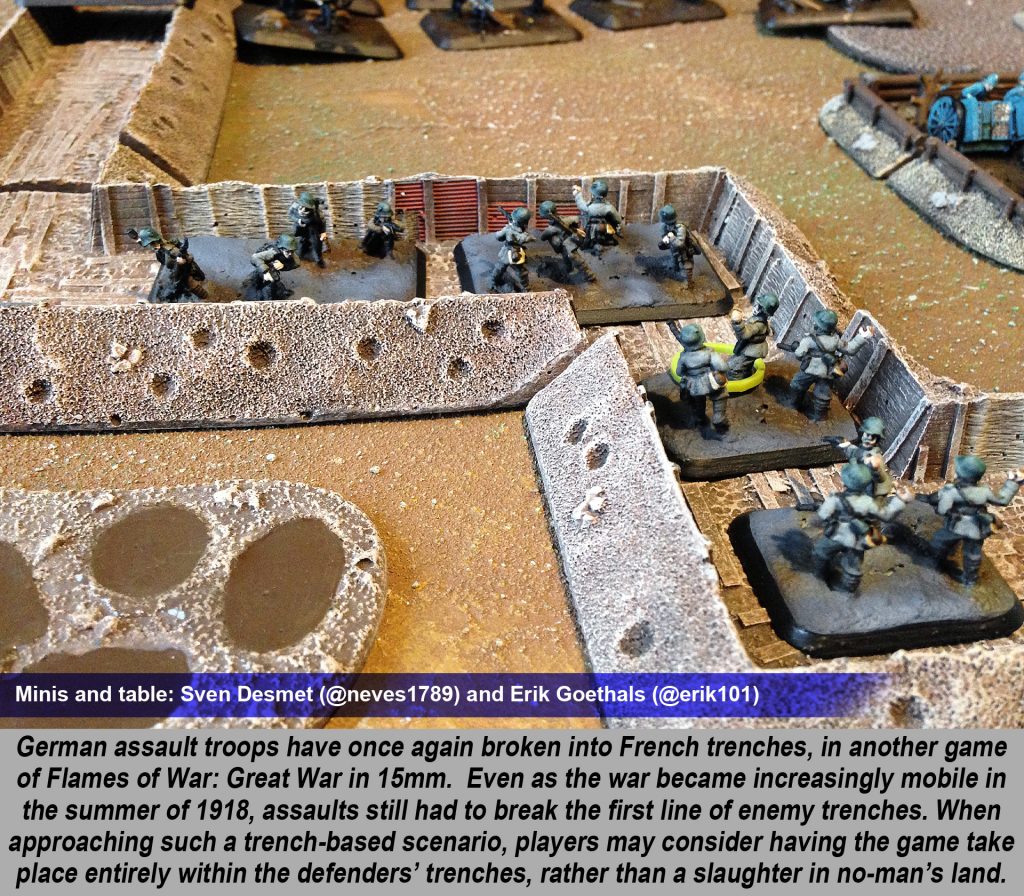
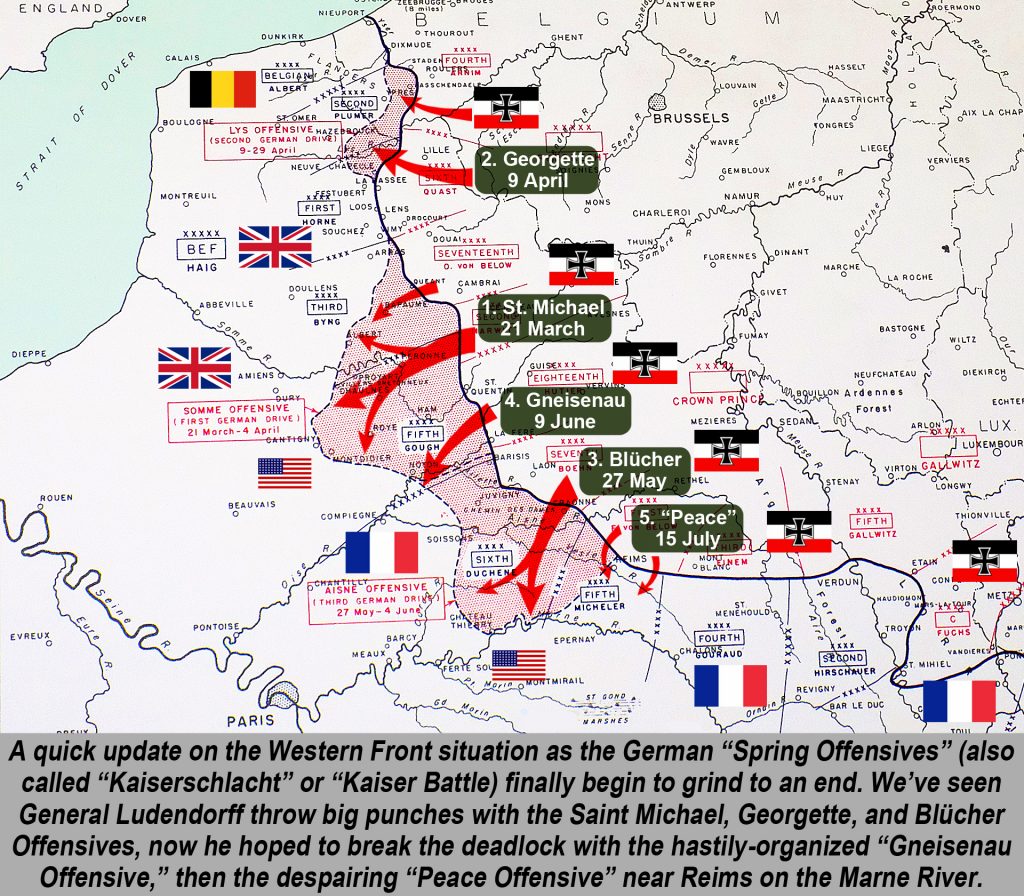
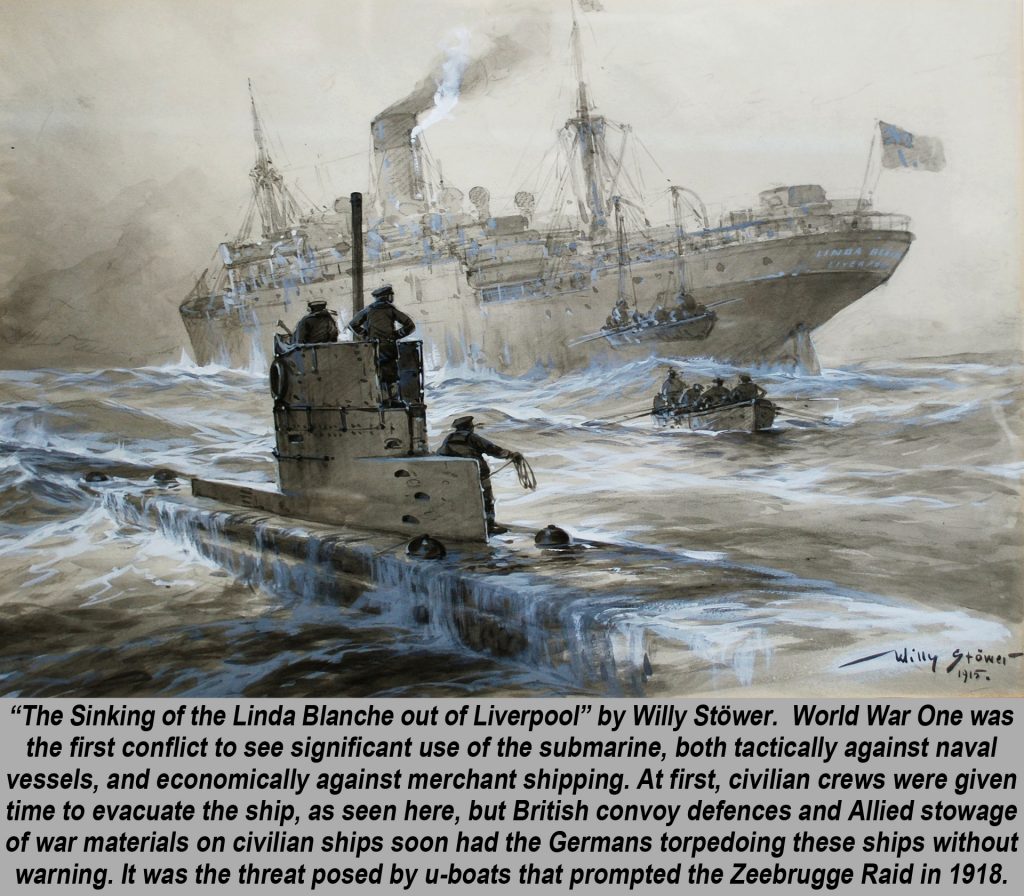
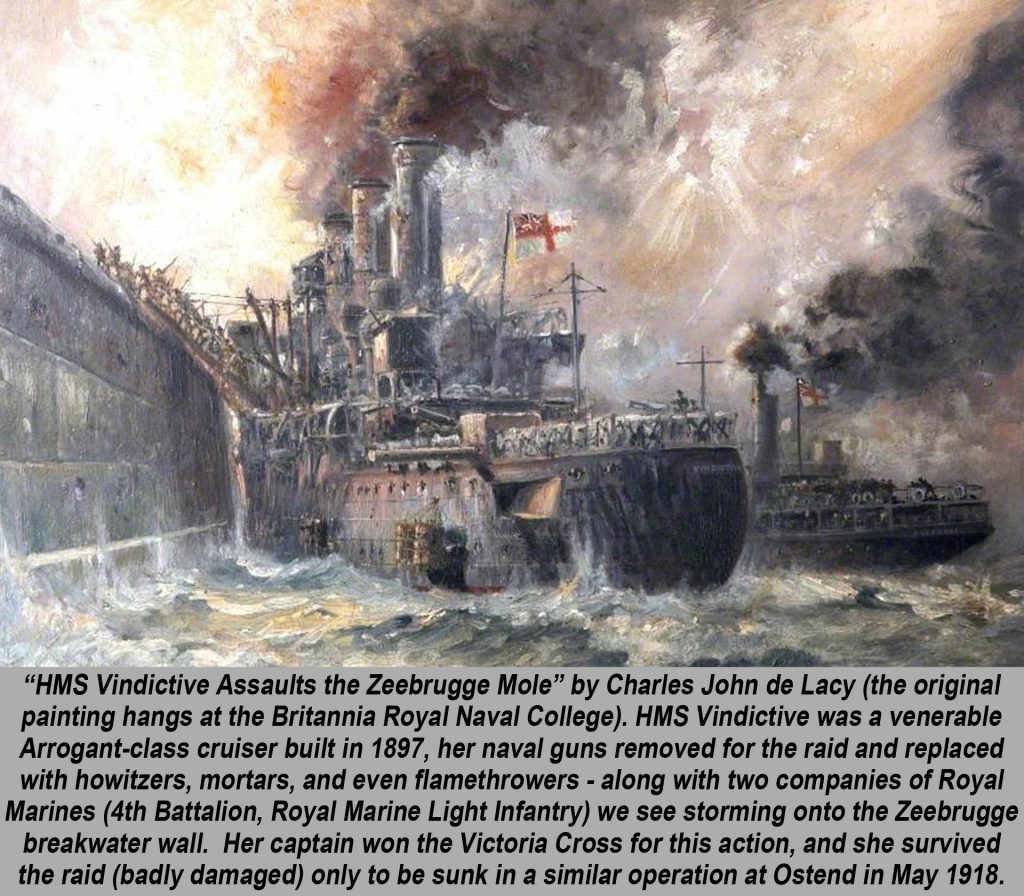

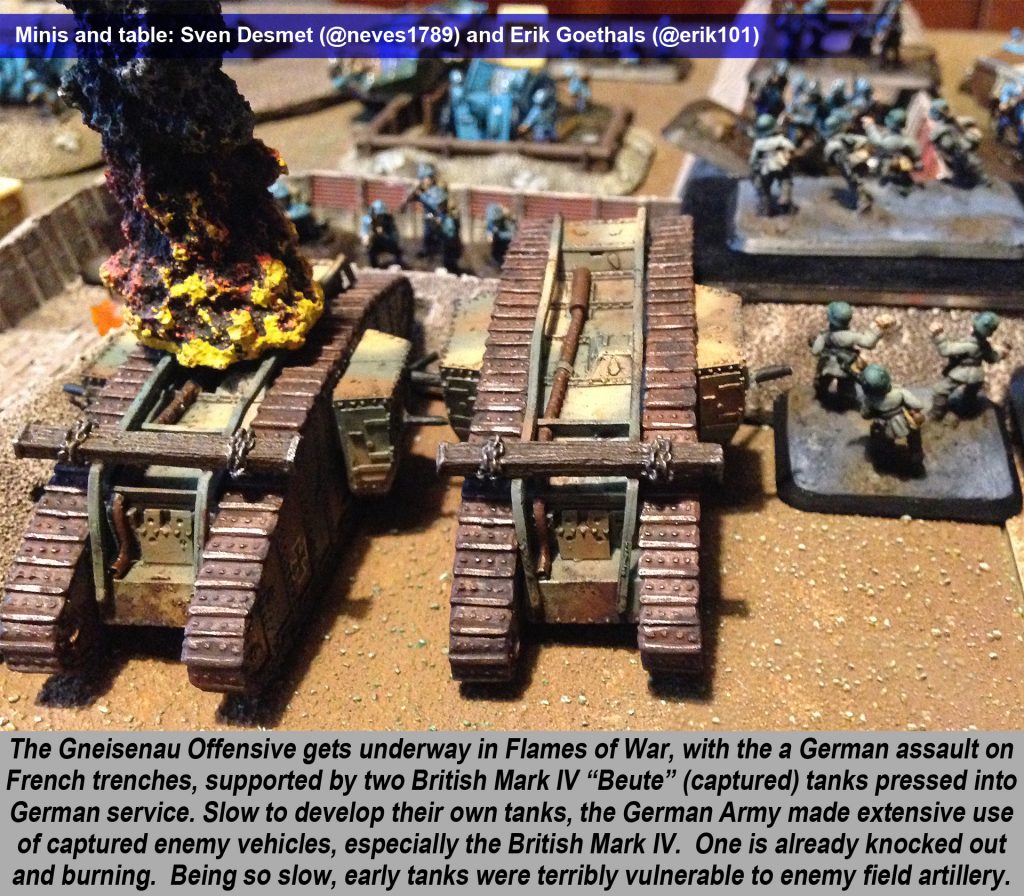

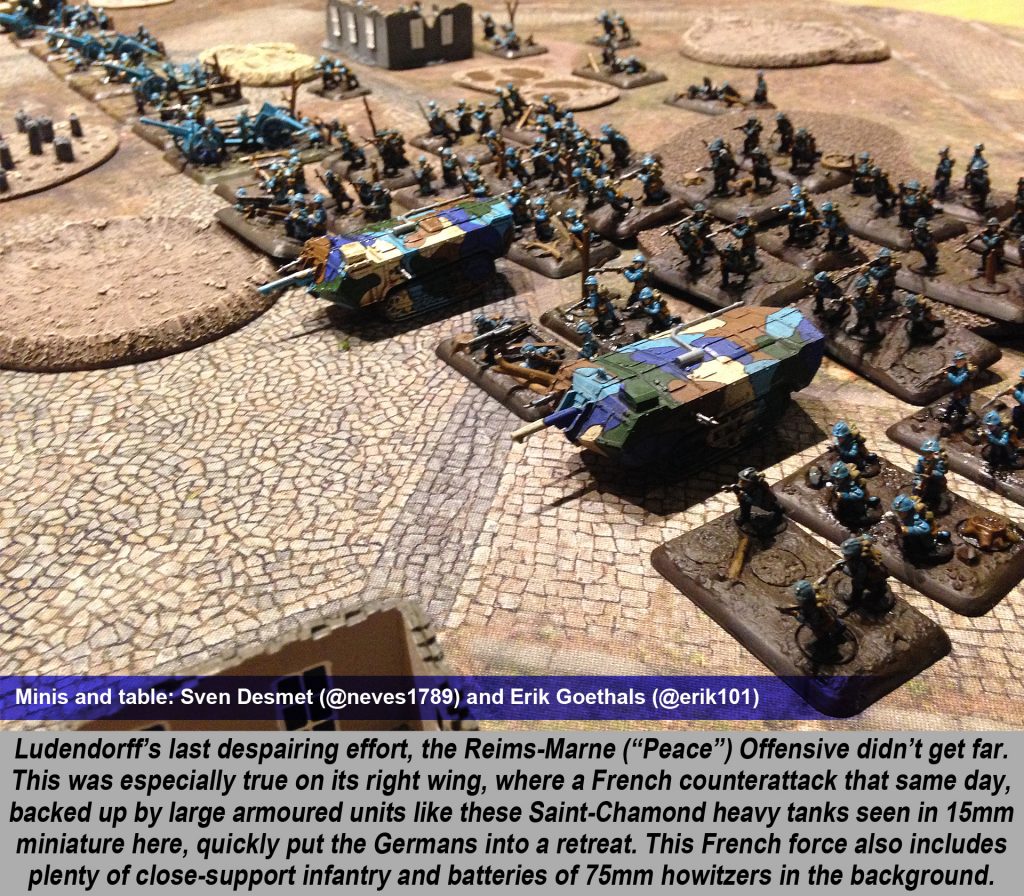
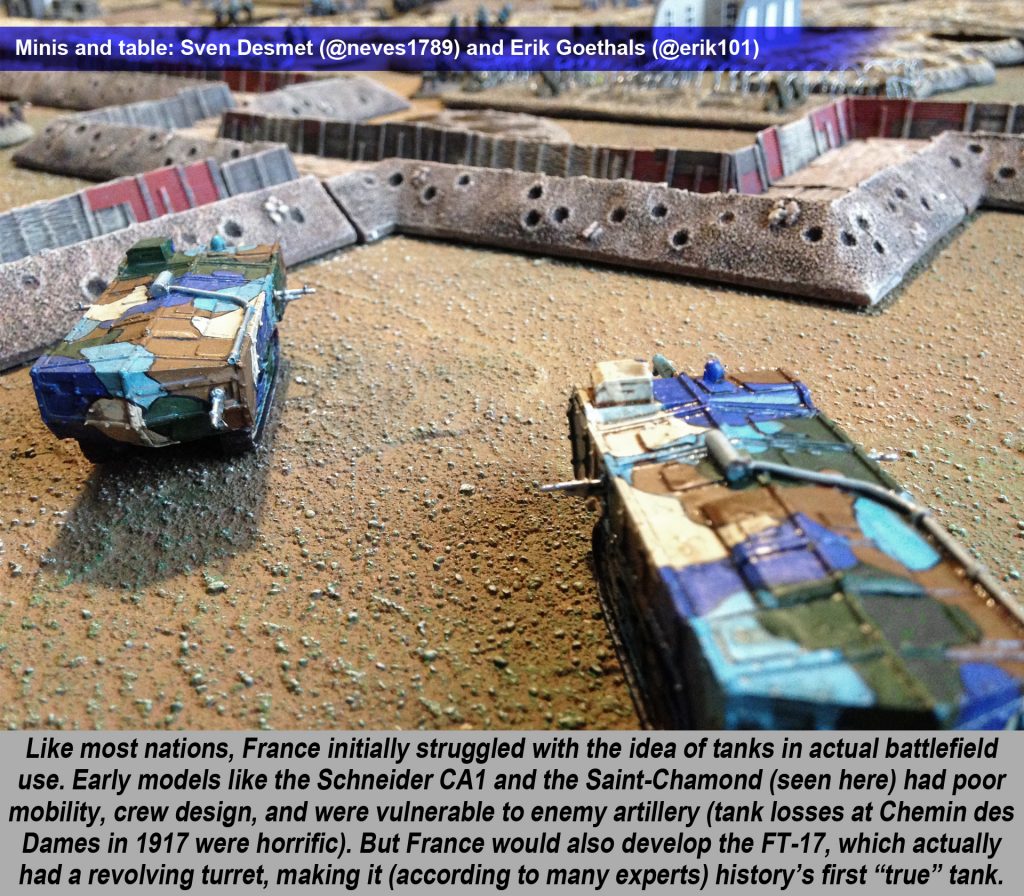
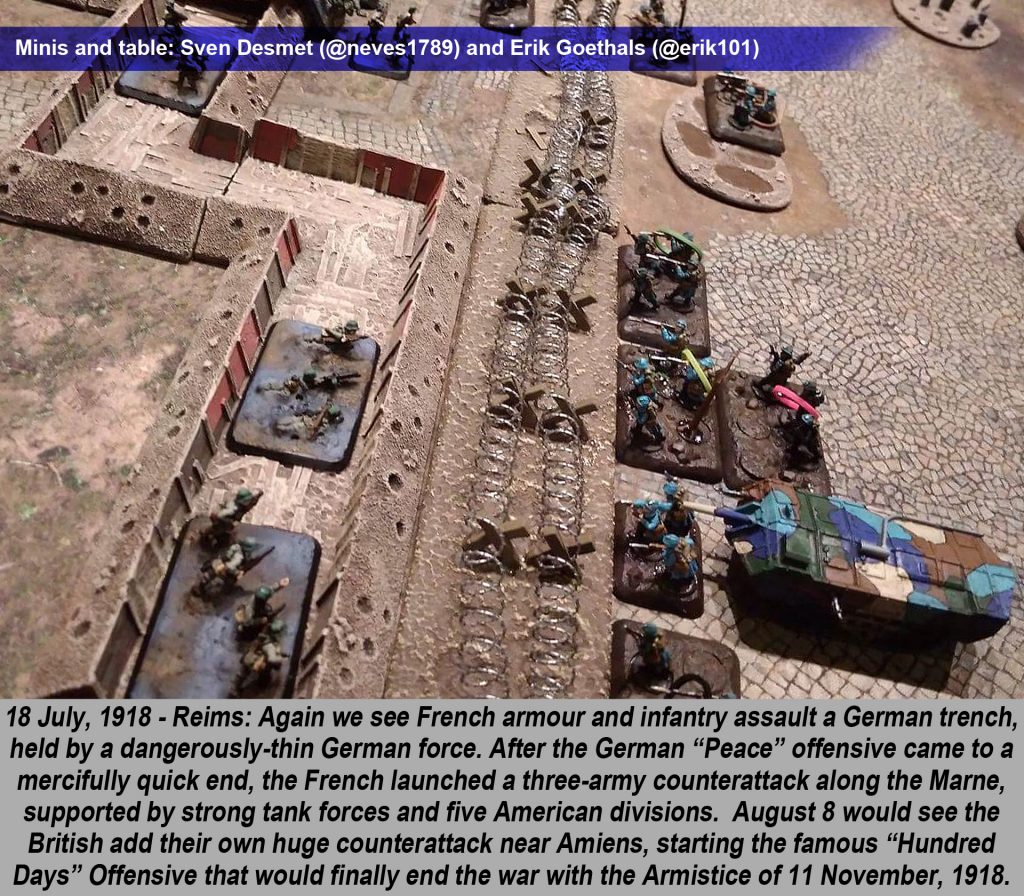
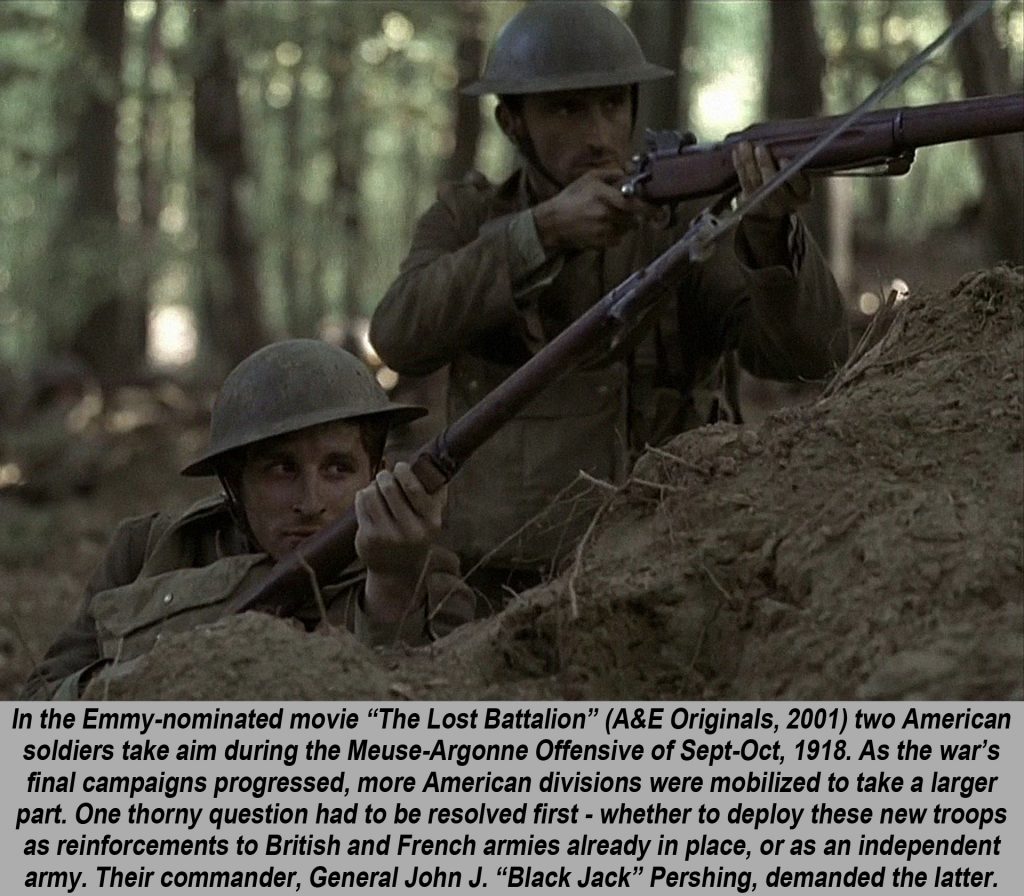



































An amazing end to the series well done everyone.
Thanks very much, @elessar2590 ! Indeed, thanks to Sven for the excellent writing, photos, and expertise, Erik and Rob for the help with the photos, Warren for the support, Lance for the front page graphics, Tom for the backstage web support, Ben and Sam for the editorial and content manager support, Just and John for the first interview and Warren and Sam for the second interview! Phew, that’s a lot of people! Team wins are the best wins! 😀 😀 😀
I really hope you guys enjoyed this article series, it’s been an absolute pleasure writing it! Another big thanks to @oriskany and the BoW team for making this possible! 😀
I’ve collaborated with a lot of people over the years here at BoW, this was honestly one of the best ones. Often it felt less like you were supporting my articles, I think a better way to describe it would be that I was in fact supporting yours. 😀
A great end to the series guys it was a close run thing near the end if the German’s had a couple more regiments ?
Thanks, @zorg – I think if the Germans had in fact managed some kind of breakthrough at Amiens or even Ypres, the war might have dragged into 1919. But winning outright? It is very doubtful. Economic damage being wrought to the German state by the long war and the British blockade was beyond impossible to ignore by this point. As Cicero once wrote: Boundless money is the raw sinew of war. Without money or even a stable economy, the Germans just weren’t sustaining a realistic war effort for very long, especially with the Americans growing more and more involved as… Read more »
I’m not sure if they took Paris the French may have surrendered on mass freeing up more unit’s to push the British into the channel? @oriskany
Definitely possible. But even so, the war probably would have just lasted until 1919. Just my opinion, though.
Yeah they were running on empty by this state with thousands starving back home.
Very true. 😀
At this point the German people started to openly criticise the war and the military. The enthusiasm of 1914 was gone. I think in winter 1918 the war would have been over anyway. Anybody expected so many casualties and the soldiers’ stories when they came home were by far too much for the German people.
I have to say, @setesch , I completely agree. 😀
I’m almost ashamed to admit I only ever thought of WWII when people brought up naval combat. It was great reading about all the naval activity in WWI.
Great wrap up to the series guys. Thanks for all the hard work!
Yeah, one of the largest naval battles in history was in World War I, Jutland/Skagerrak in May 1916. First big use of submarines as well (they tried one in the American Revolution, didn’t work … then again in the Civil War, damaged one ship at Charleston SC but was sunk itself).
Their was a program on the TV near the end of las year about a team searching for the lost ship of the Jutland battle’s they found many of the lost ships answering some of the contradictory reports the Navy has on the fighting.
I think I saw that show @zorg – if its the same one you’re talking about. Two-Hour episode of “Timeline?” They actually found some of the turret doors opened, proving that the ships were destroyed moire by very fast fires than outright explosions (men had time to at least try to escape), German shells probably hit hit the magazines directly, but started fires that then touched off magazines due to insufficient safety procedures (more emphasis placed on ease of ammo handling for faster rates of fire), etc.
Sounds about right they were way off position as well & ones ship blow in two like the Hood.
Indeed, three British battlecruisers were lost, most with nearly all hands in colossal explosions. Indefatigable, Queen Mary, Invincible. Other cruisers as well, plus smaller ships. (something like 120,000 tons in all)
Didn’t one of the lost ships actually join a German flotilla in the confusion during the fight for a time until they Got discovered.
I was going to say, I would defer on that to @torros or @commodorerob or perhaps @damon .
I’ll see if I can find a link for all the BOW viewers to watch the program.
@zorg That would be great! @orkess has been looking to see that
@zorg and @warzan – If we’re talking about the same show …
Part One:
https://www.youtube.com/watch?v=6WwZW5Roc80
Part Two:
https://www.youtube.com/watch?v=T6Cas7zsKBI
Brilliant that’s the very one I was thinking of on a survey ship getting fresh 3d picture’s of the recks to understand the battle better with the surveys an proper sat position’s over the battlemaps of the time.
I thought so. 😀 It sounded like it, based on your descriptions. But I didn’t want to speak for you and put up the wrong video. 😀
yup theirs a few good ones out their will have to steal a afternoon to vet the number down first, the one you posted is just out really to be honest.
Not sure about that sounds familiar story though 🙂
The thing that these recent documentaries don’t tell you is that everyone knew that the explosions on the battlecruisers occurred because they left the doors open for decades, it’s nothing new at all.
I agree 100% @commodorerob – I like Timeline series and this episode in general, but I remember the first I saw it sitting semi-fuming: “None of this is ‘new’ like you’re saying it is. You’re not ‘discovering’ anything or solving any age-old ‘mysteries.’ I mean, some additional scientific evidence is always good, but at the end of the day all they really did was re-validate what was already known at the time.
If your ever in Belfast you can visit the last ship afloat that fought at Jutland
https://www.nmrn.org.uk/exhibitions-projects/hms-caroline-belfast-tourist-attraction
Maybe next time I’m in Coleraine for a BoW event or a themed week or some such.
Great final wrap up to an interesting period of history 🙂
Thanks very much @commodorerob and thanks for the great pics of Zeebrugge! 😀
No worries, kind of fortunate we did the Zeebrugge game at Salute 🙂 it’s getting another run out at the Joy of Six in Sheffield in July 🙂
July, eh? Sounds great. Now I can’t promise 100% – but we maaaay be rolling out something here for July as well. 75th Anniversary of a small little skirmish somewhere in Russia, July 1943 … not a big deal or anything. 😛
Well if anyone is doing that then I will see if there are any pics I can take 😉
Awesome! If we do it, this would be one article series for which I really have the necessary tabletop armies, and at multiple scales.
Please make this happen 😀
Uh oh … looks like we may have an answer. @warzan – in all honesty, I’ve been thinking hard about this. As fate would have it, I’m also listening to your OTT “fireside chat” at the moment. One of the points you bring up is “we need to innovate, can’t keep doing the same thing over and over, or it will get stale.” So I’m just wondering if we’re starting to reach that point with these articles (27 series, 117 pieces in all, not including support threads and interviews, etc.) where it’s getting a little formulaic. Just wondering on your… Read more »
@oriskany I’m very happy to sit with you and brainstorm on new formats Jim, in fact we’ll make a point of it when we get back from UKGE 🙂
No worries, @warzan – in the meantime I’ll get started on the base groundwork so we don’t miss the July 2 deadline. 😀
You are a star mate 🙂
So we’re just going to call Warren Frank instead?
I’m glad someone caught the FDR reference. 😀 Completely complimentary, or course, as I feel FDR was one of our better presidents.
@Oriskany, @Warzan I’d say don’t fix what isn’t broken! Saying that a few thoughts to throw in for consideration of what to add or even subtract from the series. I think what would be interesting to add to these kind of series is an overview of the wargame rulesets avaliable for playing them, not just the ones your using in examples of the game matching history. Keep the Batreps in mind they compliment the series well. These aren’t an holy hand grenade of Antioch so depending on subject the number of counting doesn’t always have to be 5 which may… Read more »
Thanks very much and great reply, @admiralandy – I agree with just about everything in your post, and in fact we are already trying to aim a little more in some of these directions. Examples include … … the recent interview on Top Five Tips for Gaming in the Great War. When we decided to do a second interview for the Great War series we thought it would be good to bring a much sharper GAMING focus, with the historical overview at the beginning kept very brief (whereas historical background took up almost the whole first interview without much emphasis… Read more »
Thanks for the kind words inresponse, glad you filled in the blanks on my post, it was already getting ‘wordy’ but your are quite right that there have been shorter series and simply highlighting that sometimes works fine. Its always a damned if you do, damned if you don’t covering a subject in this way, as too broad then those already emersed in the subject skip over it, too deep more casual readers may feel a bit lost. I feel the balance overall at least to me does feel right. When talking about Pseudo history I did indeed have in… Read more »
Thanks again, @admiralandy – indeed we can never pt too much in these series it seems. This Great War series was a pretty large one (13700 words in all) and yet we still had feedback that we didn’t cover some people’s favorite spots / nationalities / etc. And this was even with a very narrow focus of covering only one war, one front, and three months of time (late March-late June). Oh, which reminds me, I did not miss your comment on including more airpower. As it turns out, though, this seems to be a much bigger factor in the… Read more »
Well these further campaigns they can of course be written about whenever, one benefit of history there’s no more or less than there was. But really if there was a year to do it, this should be something nobody would not mind seeing covered. It could quite converge for the armstice week. Interesting that air power wasn’t such a factor until the allies started attacking. I wonder if this was due to after the original push Germany spent a large amount of the war defensively sat on the high ground and didn’t develop there tactics for an offensive as well… Read more »
Like many such ideas, @admiralandy – the breakthrough platoons, stosstruppen, and mass air support all developed over time, so it’s tough to really nail down a definitive date when they were first employed. Germans were using some form of storm trooper as early as 1916 with flamethrower units at Verdun, but its the 1918 stormtrooper (MG 08 15 LMGs, Mp 18 SMGs, camouflage-painted helmet, that are really infamous. Maybe it’s an image thing as much as anything else. People were dropping bombs and grenades from aircraft on people as early as 1912 (I think the first recorded “combat air mission”… Read more »
I will send you a link to the couple of hundred pics I took at last year’s joy of six for an article that never got off the ground 🙂
Robert Dunlop does some lovely Great War Spearhead games . If you jump to about 4.50 on the video you can see it. A bit before that is a lovely 6mm star Wars game but I digress
https://youtu.be/Cumx3whdYIk
Was the Star Wars Demos games played using the Ground Assault rules, or another home brewed version of using X-Wing in ground combat. Thanks for the vid 🙂
@admiralandy I don’t know. @commodorerob I think was there so he might know
I was where? If it’s a Star Wars I zone out…lol
😀
Can’t get away from Star Wars this week, I suppose. 😐
Gasp its Star Wars, why would you want to, although I recall your mentioning about being meh with the warrior teddy bears before now. Personally I liked Solo, but where the Star Wars moves and stories are going is quite a different topic. I do wonder though that if they want a really great Star Wars movie they should go talk to the games developers from BattleFront, the Battlefront II cut scene story lines was great and felt more Star Wars than Last Jedi. Intrigue, derring do, a nicely hissable villain with the right amount of menace, gravitas and chatty… Read more »
Here’s the thing with me and Star Wars, @admiralandy – Now sadly this post is probably lost to BoW 1.0 somewhere, but when the trailer for Episode VII first came out in 2015, I put on Beasts of War somewhere, and I quote: “Every time I see Star Wars, I am five years old again. If Star Wars could do for my body what it does for my soul, I swear I would be immortal.” What a different 2 1/2 years makes. 🙁 🙁 🙁 I am juuust old enough to have seen the very first movie in the theater… Read more »
@Oriskany well as I should have expected, that’s quite the reply. I also was old enough to see it in the cinema first time around being 7 at the time, but like a fine wine were maturing well 🙂 It’s a positive self image thing very important. I think we have a bit of a different view here, I never thought twice about the ewoks, perhaps I was a bit more naive and we didn’t have the media saturation at that time as about 5 years before cable and satelites took off, maybe that was a difference for me in… Read more »
Great reply, @admiralandy . Okay, now that I got all the angst out of my system with my first post, I feel I should address some of your points in a second post and talk about some of the things I still like about Star Wars, why I like them, and I think where we agree. Quick disclaimer, I have not seen the new Solo movie yet, but damn it … despite it all , I have hope. Some movie people I watch on the web whom I trust and usually enjoy the same kinds of movies I do for… Read more »
Thanks @Oriskany, I would say I pretty much agree with your top ten list not necessaryily in that order, and the thing about the Clone Wars it gave more airtime to Palps to really cement him imo as the big bad of the Original series and why he still has an influence even after his fall down the power shaft. Ooops spoilers sry for anyone hasn’t seen that yet 😉 For CW, don’t know about the production side but as you mentioned about the spaceships, there’s a ton of that, cruisers and tanks and force users oh my! One thing… Read more »
Good call, @admiralandy – I guess I should add Palpatine to my list. He really is about the only worthwhile character in the prequels.
I’m pretty sure I have seen some of the Battlefront II scenes you’re talking about, the female pilot running around Jakku? You start off as some kind of Imperial TIE commander?
Well, Palpatine, Kenobi, Yoda, Dooku (because he was played by Christopher Lee),the rest were more background characters dancing around what Palpatine was doing (imo). But apologies as rather dragged this of topic, I’m a bit too much of a fanboy sometimes. But yes I binge watched the cutscences the other night and that is the one you referenced. Anyway, until more recent times, most of my Great War knowledge is some documentaries I saw about 20 years ago. A mix of things like Battlefield, Line of Fire and Great Commanders and some Hollywood *cough* history *cough* I did once see… Read more »
Battlefield and Line of Fire are actually pretty good documentary series, especially Battlefield. Timeline is another good one. They’re the exception to the rule, usually documentaries aren’t the best kind of history. What they do offer, however, is making people AWARE of certain topics, and then they do more detailed research on their own.
Don’t worry about changing topics. All is well, and it increases the comment count on the article! 😀
Yeah, like @warzan says – damned near everything in sci-fi is taken from history in one way or another.
Thanks very much, @commodorerob – I have your links and will definitely take a look at this when I get home! 😀
Everything comes to an end, so let it be a splendid one. This really is a very special end of a Special article series. I learnt much and grabbed a hold of many an idea for the gaming experience with WW I and other periods/games too, like Dracs put it in the interview with Oriskany and Warzan a few days ago. That interview was fantastic. As soon as the thread is online (again) I will give you two pieces, one of which will be twisted rules and army lists for Bolt Action in WW I (from an American who has… Read more »
Thanks very much @jemmy – very glad you liked the series. Again, I apologize for my audio in that interview, I’m not sure exactly what happened with my mike … but hopefully there were some useful ideas in there.
Give me a day or two to put together a new thread in the historical forums. Let this last article be on the “front page” for a while, but I do want to get the support thread going again and I have some more of the last photos from Sven and Erik I want to put up.
As ever another excellent article. Looking forward to the next.
Thanks very much, @gremlin ! Glad you liked the series. 😀
More great stuff, finally had the time to catch up with the serie.
Luck of a long weekend
The long weekend was great @rasmus , even if the first 2/3 were a little soggy with our first named tropical storm of the season. Glad you liked the series! 😀
That storm is heading our way next
That is just nuts, @rasmus – a tropical storm that is MAINTAINING its full “landfall power” after four days over land. I just did some reading and learned it was actually only a SUB-tropical storm when it passed by us, then it became a tropical depression over Tennessee. ???? Remember, “global warming” is only a myth (*yeah, right). 35 mph winds, though. That isn’t much to worry about, if you’ve ever been in one of these before. It will make a mess of some leaves and trees, some parts of your city may lose power briefly. That will be about… Read more »
Another enjoyable and informative article series, congrats to the authors.
Had an interesting and relevent article come up on my Google news feed today; a series of powerful and moving images of the old WW1 battlefields
https://www.theatlantic.com/photo/2018/05/the-fading-battlefields-of-world-war-i/561353/
Thanks very much, @damon – I clicked through these images and especially appreciated the one at Belleau Wood.
Well done to all the people involved in this . All 5 articles have been great
Thanks very much! 😀 😀 😀